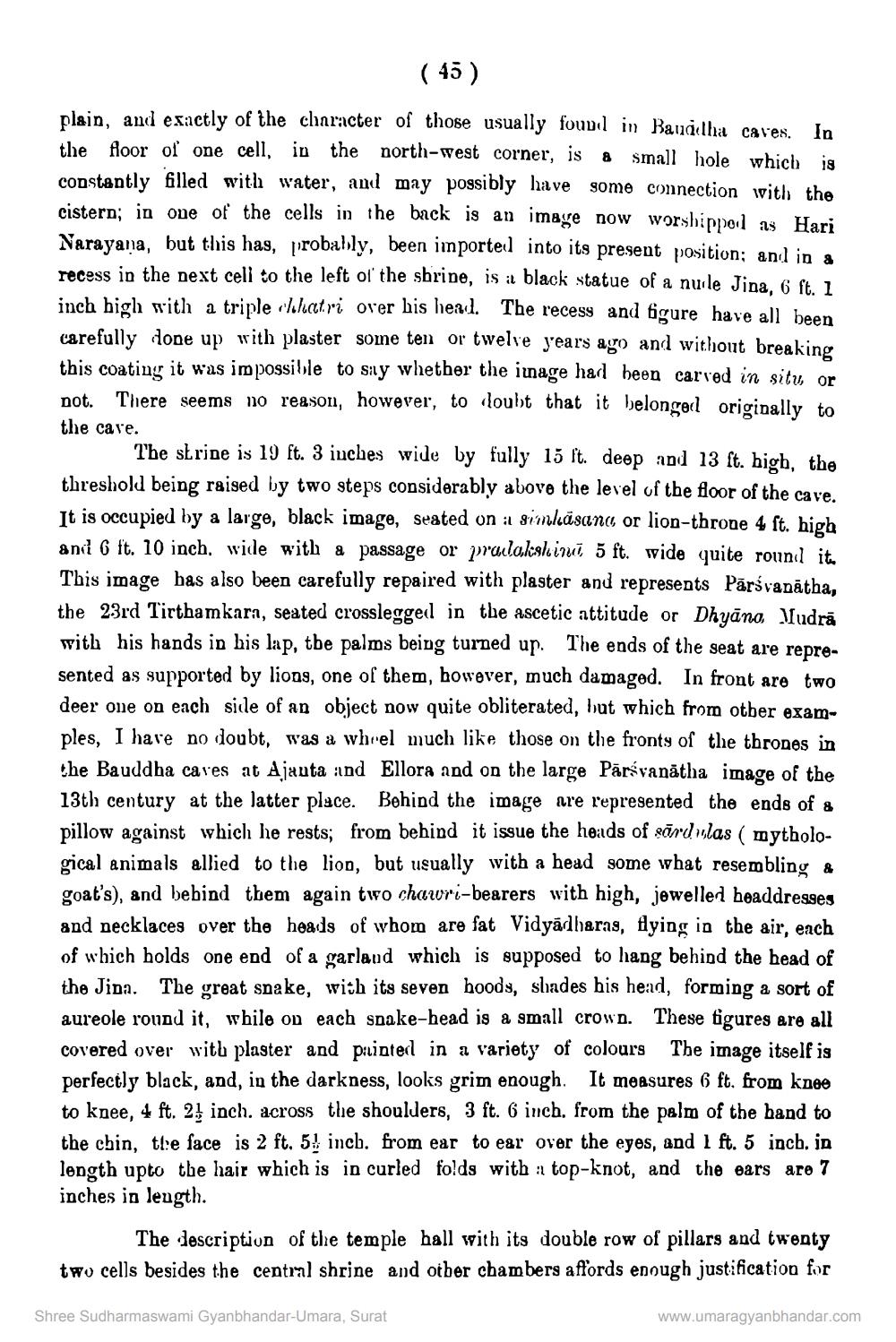________________
( 45 )
plain and exactly of the character of those usually found in Bauddha caves. In the floor of one cell, in the north-west corner, is a small hole which is constantly filled with water, and may possibly have some connection with the cistern: in one of the cells in the back is an imeve now worshippod 24 Hari Narayana, but this has, probably, been imported into its present position; and in a recess in the next cell to the left ol' the sbrine, is a black statue of a nu le Jina 6 ft. 1 inch high with a triple chhatri over his head. The recesy and figure have all been carefully done up with plaster some ten or twelve years ago and without breaking this coating it was impossible to sily whether the innage had been carved in situ, or not. There seems no reason, however, to doubt that it belongeel originally to the cave.
The skrine is 19 ft. 3 inches wide by fully 15 ft. deep and 13 st. high, the threshold being raised by two steps considerably above the level of the floor of the cave. It is occupied by a large, black image, seated on a simkäsand or lion-throne 4 ft. high ani 6 ft. 10 inch, wide with a passage or pruilokshini, 5 ft. wide quite round it This image has also been carefully repaired with plaster and represents Pārsvanātha, the 23rd Tirthamkara, seated crosslegged in the ascetic attitude or Dhyāno. Mudrā with his hands in his lap, the palms being turned up. The ends of the seat are represented as supported by lions, one of them, however, much damaged. In front are two deer one on each side of an object now quite obliterated, but which from other examples, I have no doubt, was a whrel much like those on the fronts of the thrones in the Bauddha caves at Ajauta :ind Ellora and on the large Pārsvanātha image of the 13th century at the latter place. Behind the image are represented the ends of a pillow against which he rests; from behind it issue the heads of sõrdlas ( mythological animals allied to the lion, but usually with a head some what resembling & goat's), and bebind them again two chawri-bearers with high, jewelled headdresses and necklaces over the heads of whom are fat Vidyādharas, flying in the air, each of which holds one end of a garlaud which is supposed to hang behind the head of the Jida. The great snake, with its seven hoods, shades his head, forming a sort of aureole round it, while on each snake-head is a small crown. These figures are all covered over with plaster and printed in a variety of colours The image itself is perfectly black, and, in the darkness, looks grim enough. It measures 6 ft. from knee to knee, 4 ft. 21 inch. across the shoulders, 3 ft. 6 inch, from the palm of the band to the chin, the face is 2 ft. 5! incb. from ear to ear over the eyes, and I ft. 5 inch.in length upto the hair which is in curled folds with a top-knot, and the ears are 7 inches in length.
The description of the temple hall with its double row of pillars and twenty two cells besides the central shrine and other chambers affords enough justification for
Shree Sudharmaswami Gyanbhandar-Umara, Surat
www.umaragyanbhandar.com




